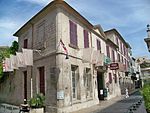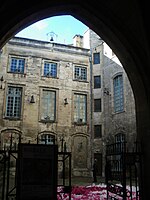Musée du Petit Palais, Avignon
1976 establishments in FranceArt museums and galleries established in 1976Art museums and galleries in FranceBuildings and structures completed in 1320Buildings and structures in Avignon ... and 5 more
Houses completed in the 14th centuryHouses completed in the 15th centuryMedieval French architectureMuseums in AvignonTourist attractions in Avignon

The Musée du Petit Palais is a museum and art gallery in Avignon, southern France. It opened in 1976 and has an exceptional collection of Renaissance paintings of the Avignon school as well as from Italy, which reunites many "primitives" from the collection of Giampietro Campana. It is housed in a 14th-century building at the north side of the square overlooked by the Palais des Papes. The building, built in the early 14th century as the residence of the bishops of Avignon, was made a UNESCO World Heritage Site as part of the historic center of Avignon in 1995.
Excerpt from the Wikipedia article Musée du Petit Palais, Avignon (License: CC BY-SA 3.0, Authors, Images).Musée du Petit Palais, Avignon
Rue Ferruce, Avignon Quartier Centre
Geographical coordinates (GPS) Address Nearby Places Show on map
Geographical coordinates (GPS)
| Latitude | Longitude |
|---|---|
| N 43.952638888889 ° | E 4.8063888888889 ° |
Address
Rue Ferruce
84000 Avignon, Quartier Centre
Provence-Alpes-Côte d'Azur, France
Open on Google Maps










